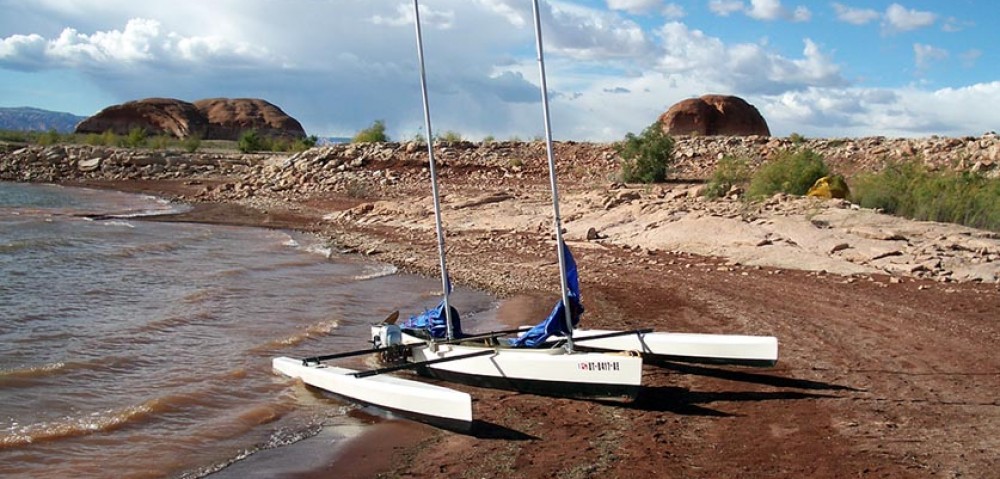|
I have developed a new, personal trimaran for small adults and kids called the Solo12. This is a car toppable boat that is meant to sail with no facility for human power other than hauling out the spare canoe paddle and getting with it. The total displacement is 300 lbs. all-up and should tip the scales at about 130 lbs. before getting wet. So, there’s room to wiggle for a wiry dude who wants to tool around in quiet waters and have a blast in a semi-reclining position. Steering is via a pair of pedals and cables to the rudder cheek block, much like a kayak and all the sail controls are fed forward so there’s no need to hike out at all. The sail area is 56 sq ft. The amas are generously sized to avoid getting out of the cockpit except to hang-out on the beach with friends and have some lunch. Lateral resistance will be provided by a side mounted leeboard on a swivel mount. This will give the boat plenty of upwind lift while being a safety oriented feature that kicks up and out of the way for beaching, or encountering underwater obstacles
The aka tubes are aircraft aluminum and will be segmented with the same spring pins and fitted ferrules you see on take-a-part paddles, so that the amas will reconnect right up next to the main hull for transport and storage. A very compact unit for putting on the roof of your car and going off to the beach, or lake, for some fun. The build is 3mm marine ply with a full layer of glass outside and taped joints inside. Easy to build, easy to move around the launch site and perfect for learning to sail with little kids as they can sit between your legs and learn how things work. Later, the same kids can take the boat out on their own and there will be no fear of them tipping over unless a tornado hits the area.
There is a companion model at 14′ LOA for slightly larger sailors, all within the car-topping attitude that this boat represents. The SOLO 14 has an optional ama design that allows the removal of the leeboard as the lateral resistance will come from the underwater fin shapes of the amas. This keeps the stuff hanging in the water to a minimum while still allowing a decent performance capability. fewer moving parts will mean simpler maintenance and less stuff to possibly break while out sailing. The rendering above shows the finned amas in place. Chris Ostlind |



